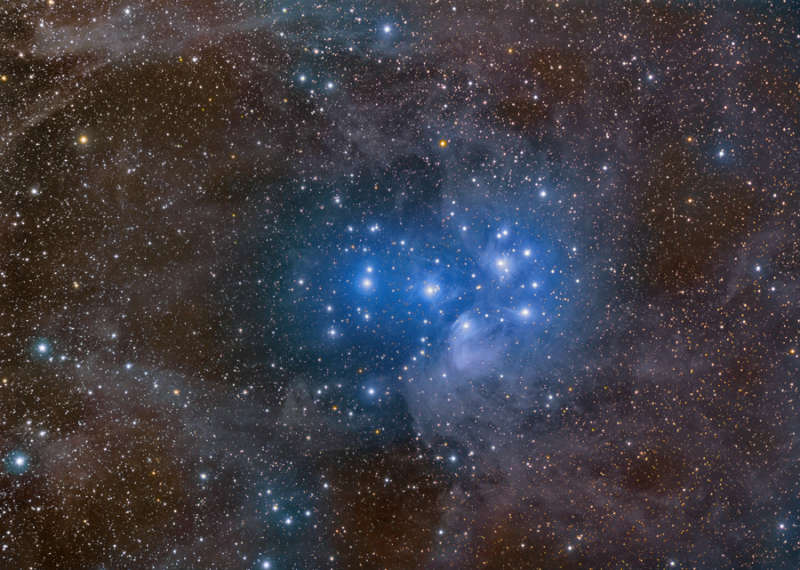
|
Credit & Copyright: Rogelio Bernal Andreo
(Deep Sky Colors)
Explanation:
Have you ever seen the Pleiades star cluster?
Perhaps the most famous star cluster on the sky, the
Pleiades
can be seen without binoculars from even the depths of a
light-polluted city.
Also known as the Seven Sisters and
M45,
the Pleiades is one of the
brightest and closest open clusters.
Hurtling through a cosmic dust cloud a mere 400 light-years away,
the Pleiades
or Seven Sisters
star cluster is well-known for its striking blue
reflection nebulae.
This remarkable wide-field (3 degree)
image of the region
shows the famous
star cluster near the center, while
highlighting lesser known dusty
reflection nebulas
nearby, across an area that would
span
over 20
light-years.
In this case, the sister stars and
cosmic dust clouds
are not related, they just happen to be passing through
the same region of space.
|
January February March April May June July August September October November December |
| ||||||||||||||||||||||||||||||||||||||||||||||||
NASA Web Site Statements, Warnings, and Disclaimers
NASA Official: Jay Norris. Specific rights apply.
A service of: LHEA at NASA / GSFC
& Michigan Tech. U.
Based on Astronomy Picture
Of the Day
Publications with keywords: dust - open cluster
Publications with words: dust - open cluster
See also:
- APOD: 2025 August 28 Á Galaxies, Stars, and Dust
- APOD: 2025 August 7 Á The Double Cluster in Perseus
- APOD: 2025 April 28 Á Gum 37 and the Southern Tadpoles
- Open Star Clusters M35 and NGC 2158
- APOD: 2025 February 25 Á M41: The Little Beehive Star Cluster
- APOD: 2025 February 11 Á The Spider and the Fly
- Young Stars, Dark Nebulae
